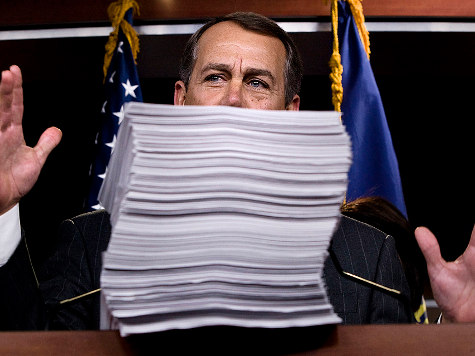
If Obamacare survives the 2016 election after it is fully implemented, there will be two healthcare systems in America from which our citizens will choose.
As former Ohio Treasurer Ken Blackwell and I explained months ago, the fifty states can freely choose whether to participate in two central pillars of Obamacare. Conservative governors will be glad in the end, if they hold true to their principles to reject this big-government takeover of healthcare.
First, Obamacare expands taxpayer-funded healthcare under Medicaid. The one part of Obamacare that the Supreme Court struck down was the provision allowing the federal government to withdraw all Medicaid funds from states that decline to go along with the expansion. As a result, states can either stay with Medicaid as it currently is, for citizens up to 100% of the poverty line, or they can join Medicaid 2.0, which goes up to 133% of the poverty line, with billions of extra federal dollars to pay for much of the expansion, but leaving states to pay collectively $50 billion more per decade.
Second, Obamacare requires insurance exchanges where people can buy coverage, but the Constitution forbids the federal government from commanding the states to pass legislation or run a federal program. States must choose to do so.
If states set up the exchanges, then people between 134% of the poverty line and 400% of the poverty line can get taxpayers to subsidize their insurance–with massive subsidies at 134% of poverty and trailing off as income increases–and dropping to zero at 400%.
But the way the statute is written, those tax subsidies only flow through exchanges set up by a state. If a state refuses, then the U.S. Department of Health and Human Services (HHS) will set up the exchange, but there will be no subsidies. This issue is currently in court, where the states are very likely to prevail because of the plain wording in the statute and the clear legislative history that Democrats in Congress deliberately chose, in order to push states in the direction of choosing to create exchanges on their own.
States would irrevocably surrender critical aspects of their sovereignty if they agree to either of these new programs. Once you’re in, a state’s programs must not only conform to the words of the Obamacare statute–the 2,700-page Affordable Care Act–but must also comply with all regulations issued by HHS. New regulations are coming out all the time (such as the now-infamous HHS contraception mandate), so the federal government has a blank check to profoundly change the system anytime it chooses.
Among other things, healthcare providers will become subject to vast new regulatory regimes in those states. Doctors and providers in those states will be far more limited in how they can practice medicine, especially if they want to be reimbursed for their services.
As a consequence, you’ll see two mass migrations after Obamacare’s major provisions go into effect in 2014.
First, states that adopt these massively-expanded entitlements will become magnets for low-income people. Many will choose to move to states where they can get “free” healthcare–meaning healthcare paid for by other people.
Second, doctors and healthcare providers will flock to states that resist these big-government programs, since doctors will be free there to practice medicine as they know best, without bureaucratic controls. So “Obamacare states” will see a growing shortage of doctors, while free-market states will see an increasing abundance of doctors. This trend will only accelerate if these states also enact medical tort reform and other pro-doctor laws.
Consequently, successful professionals–and especially those with young families–will increasingly gravitate to the free-market states. Just as parents look at the quality of local schools when deciding what township to live in, so too parents will look to the statewide healthcare system of a potential employer when deciding where to live and raise their family.
This should lead to increased economic and population growth in free-market states. That in turn should result in increased tax revenue to those states’ coffers, even as Obamacare states see increasing drains on the public fisc with fewer people contributing to the tax base.
After the 2020 census, this reality will be seen in congressional reapportionment and redistricting, as well, resulting in an increasingly-unbalanced national complexion on healthcare. But aside from that, and long before 2020, we could likely see a growing disparity in economic prosperity and availability of quality healthcare between these two types of states.
Thus the brilliance of the Framers of our Constitution becomes manifest. The states truly are the laboratories of democracy, as Justice Louis Brandeis described them. People will vote with their feet, and this will serve to accentuate which economic and healthcare approaches best serve the American people.
And that’s how our nation’s founders would have wanted it.
Ken Klukowski is a legal contributor to Breitbart News and represented Members of Congress in the Obamacare litigation.

COMMENTS
Please let us know if you're having issues with commenting.